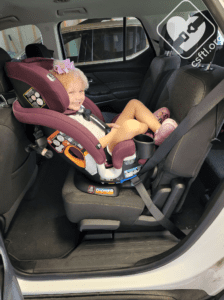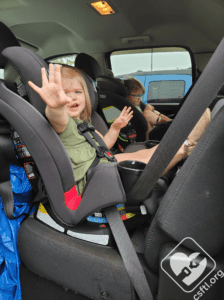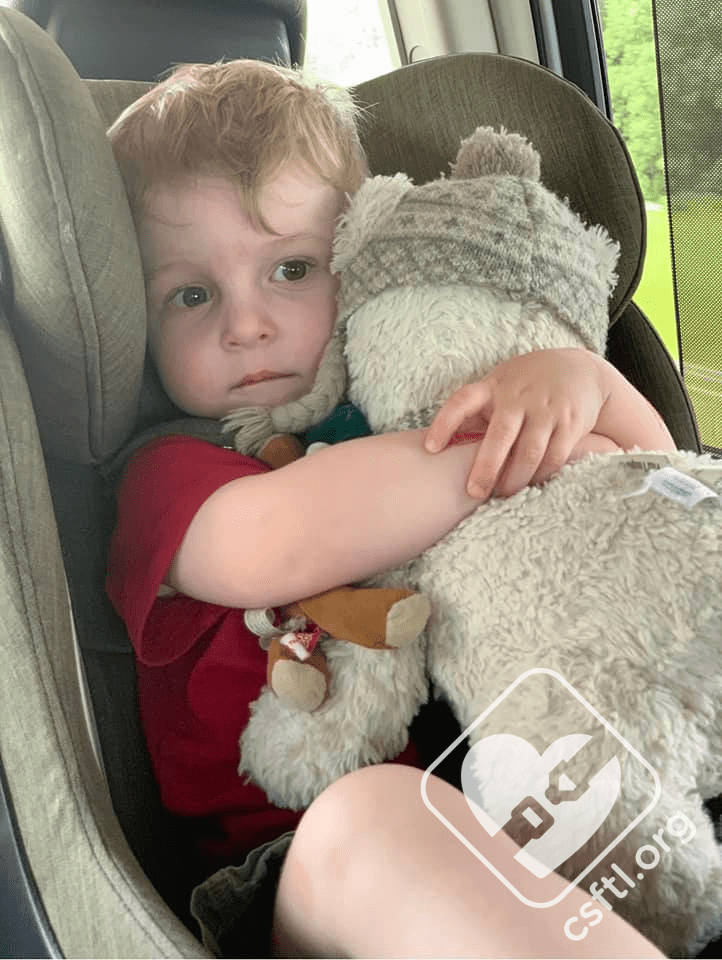Car Seat Basics: What To Do If Your Baby Cries In Their Car Seat

(Last Updated On: February 21, 2023)
Displeased toddler in her car seat
Traveling with children is part of most families’ lives. We know how stressful it can be to select, install, and use those car seats or booster seats correctly on every ride. Adding a screaming infant or toddler on top of that stress can make even the simplest of drives a real challenge for everyone in the car. We’d like to offer some suggestions for this challenging situation.
Reasons Children and Babies Cry in the Car
There are a number of reasons a child of any age could be upset while riding in the car, especially depending on their age. Here are some of the common reasons we’ve encountered:
Improper fit in their car seatBody temperature (too hot or too cold)The child is not feeling wellThey are boredThey don’t like being confinedThey may think they’re alone
Helpful Tips to Stop the Crying
Although there is no magic fix or solution to getting babies and toddlers to like being in the car, there are a number of things you can try to either reduce or eliminate the crying (or at least the severity of it).
Check The Car Seat

Graco Turn2Me rear facing recline angle indicator
Check the recline angle. If the car seat is rear facing, look at the current recline angle of the seat. If your older baby or toddler has good head and neck control, you may be able to install the seat a bit more upright, which some children find more comfortable than being reclined.

Graco SlimFit3 LX harness height adjustment
Check the harness height and tension. Double-check the position and tightness of the harness straps on the child. If your child has grown, it might be time to move the harness to the next position (reminder: harness straps must be at or below the shoulders when the child is rear facing, they must be at or above the shoulders when the child is forward facing).

Graco Turn2Me rear facing
Consider changing car seats. Transitioning to a convertible or multimode car seat if your baby is still riding in a rear facing only car seat can often help. Those types of seats can be installed a bit more upright so children who have sufficient head and neck control may benefit from changing seat types.

Stay warm with a blanket OVER the harness
Check the Baby’s Comfort Level. Is your child too hot or cold? Like us, kiddos can be too hot or too cold in the vehicle. Unlike us, they can’t just take off a layer when they need to – they need our help with this, too! It might be worth adjusting the number of thin layers the child is wearing. If fixing their clothing doesn’t help, see if you can install their car seat closer to a rear seat vent or purchase a Noggle.
Could it be Indigestion? Just like adults, children can get uncomfortable going on a car ride immediately after filling up. If your kiddo is prone to motion sickness, avoid heading out on car rides immediately after eating, if possible.
Communication Abilities

Toddler communicating well
We have some good news: this challenging phase should end eventually. Often, as the child learns to communicate, they’re able to share what’s causing their discomfort and the caregiver can help resolve the situation or explain why the child will have to wait until the ride is over to address it.
Other Options

A soft toy can help toddlers calm down in the car.
A sleeping baby is a quiet baby. If you are able to time your driving time with nap times, there is a higher chance your child will fall asleep, which naturally means no crying.Playing music or white noise. If you can live without your usual radio option, white noise or a more soothing type of music might help. Singing along can help, too!Keep a special soft toy or stuffed animal in the car. A soft lovie or a special soft toy could be the right distraction.Have someone sit next to them. If your vehicle’s setup allows for an adult or trustworthy older child to sit next to your unhappy passenger, that person might be able to comfort or distract the child so the driver can focus on the drive.
At the end of the day, some babies just don’t like the car or car seat and there isn’t much you can do. If you’ve tried all of the above tips and tricks, you might just have to wait until they grow out of it. Please rest assured that in most cases, children do outgrow this phase.
Find a CPST near you for a fit check, visit our Facebook group for advice.







